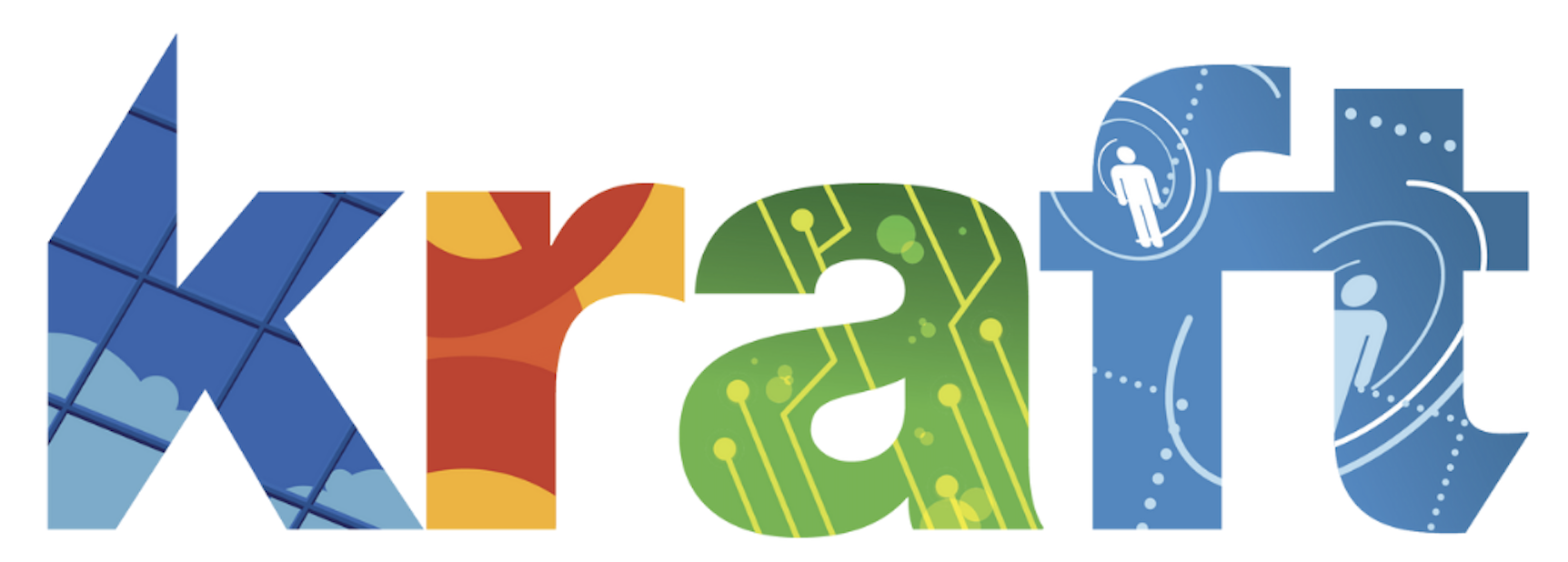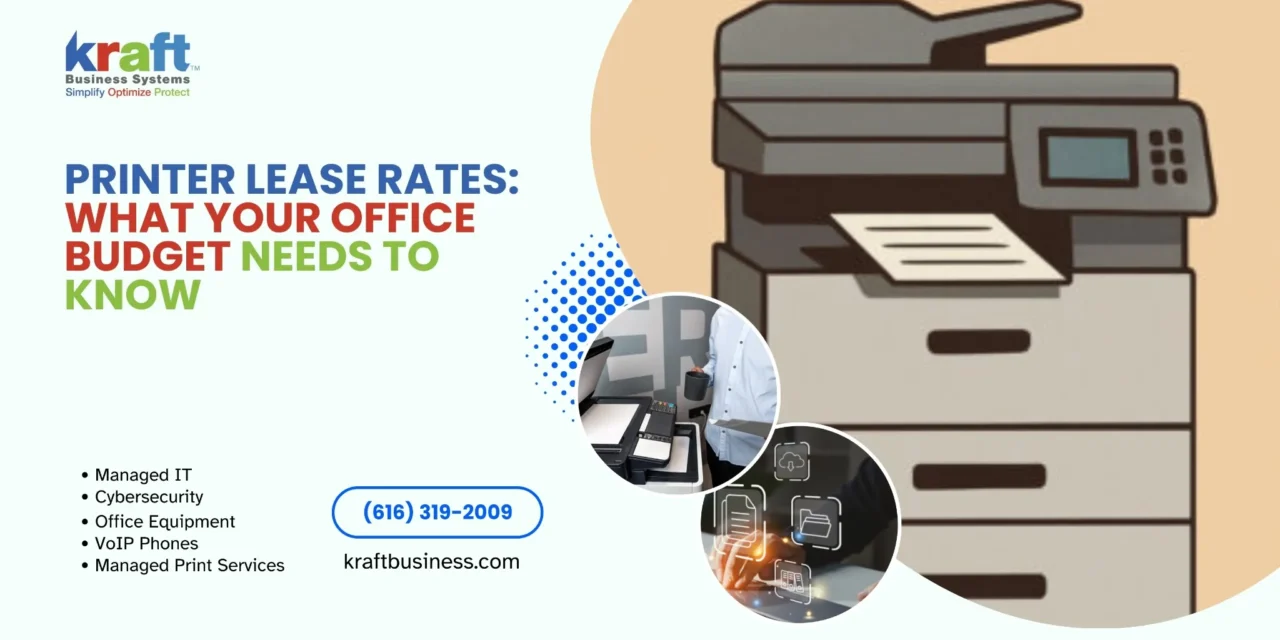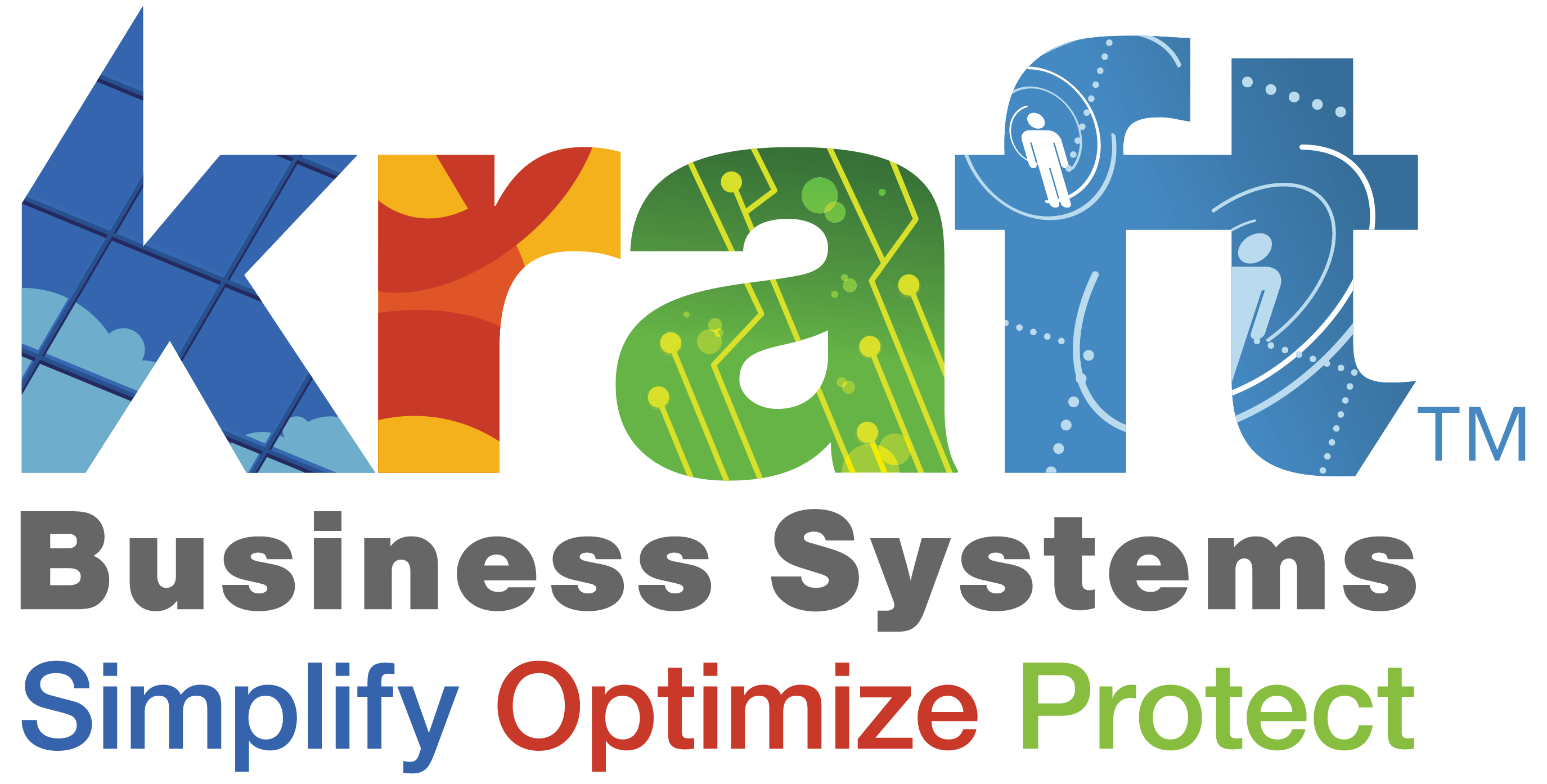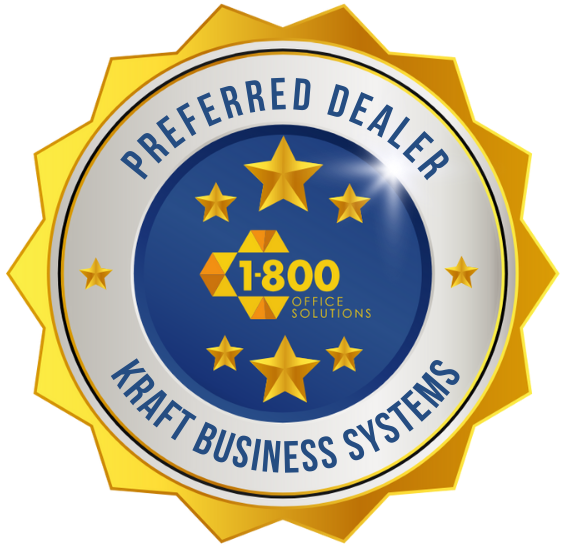Curious about what you’ll actually pay for an office printer lease? Let’s break it down in plain English.
Most businesses find their printer lease falls into one of these common ranges:
| Printer Type | Monthly Lease Rate Range |
|---|---|
| Basic B&W | $50-$150 per month |
| Color MFP | $100-$500 per month |
| High-Volume | $300-$950 per month |
Think of printer leasing like having a subscription instead of making a big purchase. Rather than dropping thousands of dollars upfront for equipment that will eventually become outdated, you make manageable monthly payments and gain flexibility for the future.
Office printer lease rates make budgeting simpler. You’ll know exactly what to expect each month, which is a relief for many finance departments. Plus, when technology inevitably advances, you won’t be stuck with an obsolete machine you paid full price for.
The real beauty of leasing is how it preserves your cash flow. That capital can be directed toward revenue-generating activities instead of depreciating office equipment. Many of our clients at Kraft Business Systems tell us they sleep better knowing their printing costs are predictable rather than surprising.
Leasing also typically includes service and maintenance in your monthly rate. This means when paper jams happen or toner runs low, help is just a phone call away—without unexpected repair bills.
The tax benefits are worth mentioning too. Lease payments can often be deducted as business expenses, offering potential advantages compared to purchasing outright. Your accountant will thank you for the simplified paperwork!
Before signing on the dotted line, take time to understand what factors influence your office printer lease rates. Consider the lease length (usually between 36-60 months), what services are bundled in, and whether you want options to purchase the equipment when the lease ends.
The monthly payment is just one piece of the puzzle. Your total cost of ownership includes everything from the base lease rate to the cost per page for printing. Understanding these components will help you make a choice that truly fits your business needs, not just your budget this quarter.
Why Lease Talk Matters
Let’s be honest – buying a printer outright requires a big chunk of cash upfront. That’s why many Michigan businesses, from small Grand Rapids startups to established Detroit companies, are turning to leasing as a smart financial move.
When you lease a printer, you transform what would be a major capital purchase into a simple operating expense with predictable monthly payments. This shift makes a world of difference for your budget planning.
“Most of our clients love the simplicity of leasing,” shares one of our Kraft Business Systems consultants. “Instead of dropping thousands at once, they pay a manageable monthly amount. It makes their financial planning so much more straightforward.”
But the benefits go beyond just spreading out payments. The tech refresh aspect is huge in today’s fast-evolving office technology world. Why get stuck with an outdated printer when you could upgrade to newer, faster, and more efficient models at the end of your lease term?
This technology flexibility is particularly valuable if you’re in a competitive industry where staying current matters. Plus, you’ll never again face the headache of trying to sell or dispose of outdated equipment – that becomes the leasing company’s problem, not yours.
For growing businesses, leasing also preserves your borrowing power for other critical investments while keeping your monthly technology costs consistent and predictable. It’s about maintaining financial flexibility while ensuring your team has the tools they need to succeed.
How Office Printer Leasing Works & Key Terms
Before diving into specific rates, it’s important to understand the fundamentals of how printer leasing operates. At its core, a printer lease is a financial agreement that allows your business to use equipment for a fixed period while making regular payments.
Most office printer lease rates are based on terms running between 24 and 60 months. The sweet spot for many Michigan businesses tends to be 36 or 48 months. It’s a simple trade-off: longer lease terms mean lower monthly payments but higher total financing costs over the life of the agreement.
When you’re exploring printer leasing options, you’ll encounter two main lease structures:
Fair Market Value (FMV) Lease gives you flexibility at the end of your term. You can return the equipment, buy it at whatever it’s worth at that time, or extend your lease. The monthly payments are typically lower than other options because you’re not paying to own the equipment.
$1 Buyout Lease is essentially a path to ownership. You’ll pay slightly higher monthly rates, but when the lease ends, you can purchase the equipment for just $1. It’s basically a financing plan with ownership as the end goal.
Understanding the residual value of your equipment is crucial with FMV leases – this is what the leasing company projects your printer will be worth when your term ends. You should also be aware of any early termination fees if you need to end your lease prematurely. Many businesses appreciate having upgrade options built into their agreement, allowing for equipment exchanges during the lease term.
Don’t forget about the end-of-term notice requirements – missing these deadlines can sometimes automatically extend your lease!
Lease structure in 60-seconds
Think of a printer lease as a three-way relationship:
The Lessor is the finance or leasing company that actually owns the equipment and collects your payments. The Vendor (that’s us at Kraft Business Systems) supplies and services the equipment. And The Lessee (that’s you) uses the equipment and makes the payments.
When you sign on the dotted line, you’re committing to fixed monthly payments for the duration. The finance company buys the equipment from us and leases it to you. This clever arrangement lets you preserve capital while still getting the technology your business needs.
“About 8 out of 10 business printers and copiers are acquired through leasing programs,” shares one of our leasing specialists at Kraft. “It involves less upfront commitment, and makes upgrading your technology every few years both convenient and affordable.”
Service contracts – the other half
The lease is just half the story. Your service contract is equally important, covering all the operational aspects of your printer:
Maintenance, repairs, toner, supplies (except paper), technical support, and parts replacement are typically all wrapped into this agreement. This is usually billed as “click charges” – a cost-per-page model that varies based on what you’re printing.
Black and white pages typically cost around 1.5 cents per page, while color pages run about 8 cents each. These rates can vary based on volume and other factors, but give you a general idea of what to expect.
Many of our clients at Kraft prefer all-inclusive leases that bundle equipment and service costs into one simple monthly payment. It’s convenient, but we always make sure you understand both components.
As one of our consultants likes to explain: “It’s like leasing a car. The lease payment covers the vehicle itself, but you still need to factor in gas, insurance, and maintenance. With printers, the service contract covers those operational costs.”
Want to dig deeper into the fine print? Check out our comprehensive guide to Printer Lease Agreements for everything you should look for before signing.
2025 Office Printer Lease Rates & Real-World Examples
The printer leasing landscape has shifted considerably in recent years, with 2025 bringing fresh considerations for businesses looking to optimize their printing setup. Let’s explore what you can expect to pay for office printer lease rates right now.
Average office printer lease rates by volume
What you’ll pay for your printer lease depends largely on how much printing muscle you need. Here’s what our Michigan clients typically see:
For low-volume needs (printing up to 5,000 pages monthly), expect to pay between $65-$150 monthly. Basic black and white printers start at the lower end, while entry-level color multifunction devices push toward the upper range.
Moving into mid-volume territory (5,000-10,000 pages monthly), standard black and white multifunction devices generally run $150-$250 monthly, with their color counterparts ranging from $200-$350.
Businesses with high-volume demands (exceeding 10,000 pages monthly) will typically invest $400-$950 monthly, depending on capabilities. Advanced black and white systems start around $300-$500, while robust color systems range from $400-$600. Production-level workhorses that handle massive volumes can reach $950 or more.
These figures reflect base equipment costs on typical 36-60 month terms. Your actual rate will vary based on your specific configuration, chosen term length, and whether you bundle in service.
“Most businesses don’t realize how much their print volume affects their bottom line,” shares one of our print consultants at Kraft. “We’ve helped companies save thousands simply by matching them with the right-sized equipment for their actual needs.”
Want a deeper dive into pricing expectations? Check out our comprehensive guide on Printer Leasing Costs: What to Expect.
Real-World Examples
Let’s look at how these rates translate to actual Michigan businesses (with names changed for privacy):
A small law firm in Grand Rapids leases a basic black and white multifunction device for their team of eight attorneys. With roughly 3,000 pages printed monthly (mostly legal documents in black and white), they opted for a 36-month lease at the lower end of the spectrum. Their package includes basic maintenance and toner delivery.
Meanwhile, a marketing agency in Ann Arbor with heavy graphic design needs chose a high-end color multifunction system. Printing about 8,000 pages monthly (60% in color), they selected a 48-month lease in the mid-high range. Their package includes full service, supplies, and advanced finishing options like stapling and booklet creation.
A medical clinic in Traverse City with multiple departments leases two mid-range black and white multifunction devices. Together, these machines handle about 15,000 pages monthly of patient records and administrative documents. Their 48-month lease falls in the mid-range per device and includes a comprehensive service package with rapid response time – critical for their patient care operations.
Office printer lease rates per print allowance
Beyond the equipment lease, understanding your per-page costs is crucial for accurate budgeting. Most service contracts include a monthly print allowance with additional charges for going over your limit.
For black and white printing, the average rate hovers around 1.5 cents per page, though this can range from 0.5-3 cents depending on your volume commitments and machine type.
Color printing naturally costs more, averaging around 8 cents per page, with ranges from 5-12 cents based on similar factors.
Many service contracts use tiered pricing structures that reward higher volume. For example, your business might pay 1.5 cents each for your first 5,000 black and white pages, then 1.2 cents each for pages 5,001-10,000, and finally just 1 cent each for anything beyond 10,000 pages.
“We see it all the time,” notes our print assessment specialist. “Businesses either overpay for capacity they never use, or get surprised by hefty overage fees because they underestimated their actual printing habits. A proper assessment before signing can prevent both scenarios.”
Understanding both your equipment lease and your per-page costs gives you the complete picture of what you’ll pay for your printing solution. At Kraft Business Systems, we help Michigan businesses find that perfect balance between capability and cost-efficiency.
What Drives Your Rate: 8 Cost Factors, Services & Hidden Fees
When shopping for an office printer lease, understanding what influences your monthly payment can save you thousands over the life of your contract. Think of office printer lease rates like an iceberg – the advertised monthly payment is just the visible tip.
Eight key factors determine what you’ll actually pay:
Your equipment MSRP serves as the starting point – a $15,000 machine naturally costs more to lease than a $5,000 one. Your print volume capacity matters too, as higher-duty machines command premium rates. Color capabilities significantly impact pricing, with full-color systems costing substantially more than black-and-white only devices.
The lease term length you choose creates a direct trade-off – shorter 24-month terms mean higher monthly payments but less total interest, while 60-month terms offer lower monthly payments but higher overall costs. Your business’s credit rating plays a crucial role too, with stronger credit profiles open uping more favorable rates.
Don’t forget that additional features like stapling, hole-punching or booklet-making will bump up your costs. Your geographic location matters as well – rates can vary across different Michigan markets based on local competition and operating costs. Finally, insurance requirements in your lease agreement might necessitate additional coverage beyond your existing business policy.
Factor #1 Equipment & specs
The printer’s specifications form the foundation of your lease rate. It’s a bit like buying a car – the base model costs less than one loaded with premium features.
Print speed makes a huge difference in both productivity and price. Entry-level machines running at 20-30 pages per minute (PPM) cost significantly less than speedier 50+ PPM workhorses. As Tom, one of our Kraft Business consultants, often tells clients: “Matching print speed to your actual workflow needs is crucial. Paying for a 70 PPM machine when you only need 35 PPM is like buying a sports car for grocery runs.”
Paper handling capabilities affect both convenience and cost. Standard letter/legal size handling comes standard, but wide-format printing or high-capacity paper trays will increase your lease rate. The ability to handle specialty media like envelopes, cardstock, or labels adds convenience but also costs.
Finishing options can transform a basic printer into a document production powerhouse – at a price. Basic stapling might add a modest amount to your lease, while advanced booklet-making, hole-punching, or folding capabilities can significantly increase your monthly payment.
Finding the right balance between functionality and cost is key. For help identifying which models offer the best value for your specific needs, check out our guide to the Best Printer Models to Lease.
Factor #2 Service & supplies bundle
The service agreement often represents 40-60% of your total printing costs, yet many businesses focus exclusively on the equipment portion. A comprehensive service bundle typically includes preventative maintenance, on-site repairs, parts replacement, remote monitoring, and help desk support.
The supplies management aspect can be a major convenience, with automatic toner delivery triggered when your machine runs low and toner recycling programs to help with your sustainability goals. Don’t forget that consumable parts like drums and fusers are also covered under most service agreements.
The structure of these agreements significantly impacts your costs. A cost-per-page model charges based on actual usage (typically 1.5¢ for B&W and 8¢ for color), providing transparency but requiring careful monitoring to avoid budget surprises. Alternatively, a fixed monthly fee offers budget certainty regardless of volume – great if your usage is consistent, potentially costly if your printing is sporadic.
Service response times directly affect pricing too. While a next-business-day response might be sufficient for some businesses, organizations with critical printing needs might justify the premium for 4-hour response guarantees.
“The right service bundle can actually save you money,” explains Sarah from our service team. “When businesses try to handle supplies and maintenance themselves, they often end up with higher costs and more downtime than with a properly structured service agreement.”
For a deeper dive into comprehensive service options, visit our Managed Print Services: Benefits page.
Factor #3 Contract extras you’ll pay for later
The fine print in printer lease agreements often contains costs that can catch businesses by surprise. Being aware of these potential extras helps prevent budget shocks later.
Delivery and installation costs might seem minor, but they add up quickly. Equipment delivery, physical setup, network integration, and initial training can either be bundled into your lease or charged separately – make sure you know which before signing.
Ongoing operational costs extend beyond your base lease payment. Network support fees, software updates, and additional user training might be needed throughout your lease term. Some jurisdictions even pass property taxes for leased equipment to the lessee – another potential surprise.
Contract-related fees can be especially painful if not anticipated. Early termination penalties frequently equal the remaining payments in full – ending a 60-month lease after just 36 months could mean paying 24 months of payments immediately. End-of-lease processing, equipment return, and document fees are other common add-ons.
Most leases require insurance coverage for the equipment. If your existing business policy doesn’t provide adequate coverage, you’ll either need to purchase additional insurance or pay a waiver fee to the leasing company.
“The early termination fee catches more businesses off guard than any other contract provision,” notes Mike, our contracts specialist. “I always recommend clients consider their future growth plans carefully. If you might need to upgrade in three years, don’t lock into a five-year lease without understanding the exit costs.”
By understanding these factors before signing, you’ll be better positioned to negotiate favorable terms and avoid unexpected costs throughout your lease term.
Lease vs Buy, Negotiation, Tax Perks & FAQs
When considering office printer lease rates, businesses must weigh the benefits of leasing against outright purchase. This decision impacts not just your budget, but how your team manages technology over time.
Pros & cons checklist
Let’s talk about what makes leasing attractive for many Michigan businesses. Preserving capital stands as perhaps the biggest advantage – keeping your cash free for revenue-generating activities rather than tying it up in depreciating equipment. The predictable monthly expense makes budgeting simpler and converts a large purchase into a manageable operating expense.
“I love knowing exactly what our print costs will be each month,” shared one of our Grand Rapids clients. “No surprises means better planning for everything else.”
Technology refresh is another compelling reason many choose to lease. When your 5-year-old printer finally gives up, you’re stuck with disposal costs and emergency replacement decisions. With leasing, you can smoothly transition to newer technology when your term ends.
Of course, leasing isn’t perfect. The total lifetime cost typically exceeds what you’d pay for a purchase. You’re also committing to a contract term with potential early termination penalties. Unlike owning an asset outright, standard leases build no ownership equity (though $1 buyout options change this equation).
Buying has its own advantages – complete ownership control, no contractual obligations, and potentially lower lifetime costs if the equipment serves you well for many years. However, you’ll need that significant upfront capital investment and you’ll shoulder all maintenance responsibilities as the equipment ages.
As Brad Foster from one of our research sources puts it, “Buying equipment is simple. You decide what you need, and then you buy it.” But simple doesn’t always mean strategic – especially when managing cash flow in growing businesses.
Negotiating better office printer lease rates
With some insider knowledge, you can secure more favorable office printer lease rates than what initially appears on the quote.
Start by gathering multiple proposals from at least three providers. This gives you leverage and a realistic view of the market. Don’t just compare the monthly payment – look at the total cost of ownership including service, supplies, and end-of-term options.
Understanding the term-rate trade-off puts you in a stronger position. A 60-month lease might show a temptingly low monthly payment, but you’ll pay more over the full term and potentially be stuck with aging technology in years 4 and 5. A 36-month lease means higher monthly payments but greater flexibility and fresher technology.
“Match your lease term to how long you actually want to keep the technology,” advises our leasing specialist at Kraft. “For most businesses, that sweet spot is 36-48 months.”
Don’t overlook end-of-term negotiations. Secure clear, flexible renewal terms and clarify equipment return conditions to avoid surprise charges. Many vendors will also offer mid-lease upgrade paths if you negotiate them upfront.
Timing matters too. “The best time to negotiate is at the end of a quarter or fiscal year,” our leasing specialist notes with a wink. “Vendors suddenly become much more flexible with terms when they’re trying to hit their targets.”
For businesses on tighter budgets, quality refurbished equipment can offer substantial savings – often 20-40% lower lease rates. Just ensure these units include comparable warranty and service coverage.
Small businesses should check out our specific strategies on Leasing Printers for Small Business for additional negotiation leverage.
Tax & accounting insights
The financial benefits of leasing extend beyond simple cash flow management into potential tax advantages.
With standard operating leases, payments are generally 100% tax-deductible as business expenses. This creates immediate tax benefits versus the more complex depreciation schedules required for purchased equipment. Many businesses also appreciate that leasing keeps equipment off the balance sheet under certain accounting rules, preserving debt capacity for other business needs.
Section 179 tax provisions offer additional considerations. These may allow businesses to deduct the full cost of certain leased equipment in the year it’s placed in service, rather than depreciating it over time. This applies to both new and used equipment, though annual limits and qualifications apply.
“While leasing typically costs more than buying over the full term, the tax benefits and cash flow advantages often make it the preferred choice for businesses focused on growth,” explains our financial consultant. “It’s about optimizing when and how you use your capital.”
Strategic timing of lease starts and technology upgrades can further improve these benefits. Consider aligning new leases with your fiscal year planning and business growth cycles.
We always recommend having a conversation with your accountant about your specific situation. Tax rules change, and your business circumstances might make certain options more advantageous than others. Learn more about financial benefits in our guide to Save Money with Printer Leasing.
Frequently Asked Questions about office printer lease rates
What happens at the end of my printer lease?
Your options typically include returning the equipment, purchasing it (at fair market value or a predetermined amount like $1), or upgrading to new technology with a fresh lease. The best choice depends on your equipment’s condition and your future needs.
Are deposits required for printer leases?
Most established businesses with decent credit can secure no-money-down leases. If your business is newer or has credit challenges, you might need to provide a security deposit or a few advance payments to secure approval.
Can I lease refurbished or used printers?
Absolutely! Many of our Michigan clients choose certified refurbished equipment to maximize their budget. These leases typically feature lower monthly payments, though they might have slightly different terms or service provisions than new equipment leases.
How are print volumes monitored for billing?
Modern printers and MFPs have built-in meters that track usage – much like the odometer in your car. These meters are either read remotely through secure monitoring software or reported manually (often through a simple photo of the meter screen) for billing purposes.
Can I add equipment to an existing lease?
In most cases, yes. Leasing companies generally allow you to add equipment to existing leases, though this will result in recalculated payments and potentially extended terms. This flexibility helps when your business grows or departmental needs change.
What’s the difference between FMV and $1 buyout leases?
Fair Market Value (FMV) leases offer lower monthly payments but require paying the current market value to keep the equipment when the lease ends. $1 buyout leases have higher monthly payments but guarantee you can purchase the equipment for just $1 at lease conclusion. The right choice depends on whether you ultimately want to own the equipment.
Can I terminate my lease early if my needs change?
Most leases allow early termination, but typically require payment of all remaining lease payments – which can be substantial. Some leases offer more flexible exit options, but these usually come with higher monthly rates to offset the leasing company’s risk.
Conclusion
Navigating office printer lease rates doesn’t have to be overwhelming. With the right information and approach, you can secure an arrangement that balances your budget constraints with your operational needs.
Here’s a quick recap of the key points to remember:
- Understand the full cost picture – Look beyond the base monthly payment to include service, supplies, and potential additional fees.
- Match equipment to actual needs – Avoid paying for speed, volume capacity, or features you won’t use.
- Consider lease structure carefully – Choose between FMV and $1 buyout options based on your long-term plans for the equipment.
- Negotiate strategically – Use multiple quotes, timing, and bundling to secure more favorable terms.
- Plan for the entire lifecycle – Consider not just the initial acquisition but also mid-lease flexibility and end-of-term options.
At Kraft Business Systems, we’ve helped hundreds of businesses across Michigan – from small startups in Traverse City to established enterprises in Detroit – optimize their printing infrastructure and costs. Our team of consultants brings decades of experience in crafting customized solutions that align with both operational requirements and budget constraints.
Whether you’re looking to lease your first office printer or restructuring an entire fleet across multiple locations, we can guide you through the process with clarity and transparency. Our goal is to ensure you get the right equipment at the right price, with service and support you can count on.
Ready to explore your options? Contact our specialists for a custom printer-lease quote today. We’ll help you steer the complexities of printer leasing to find a solution that works for your unique business needs.
